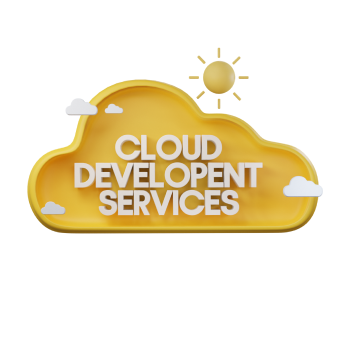Cloud Development Services in Australia and Dubai
We offer Cloud services for applications and infrastructure. Cloud services allow customers to take advantage of powerful computing resources without the need to purchase or maintain hardware and software.

Elevate Your Business to the Cloud with Zcoderz’s Cloud Development Services
When you use our cloud development services, you can delegate the infrastructure management and focus on using it. Our cloud provider you choose will provide a wide range of activities that will keep your business running, such as processing applications or sharing, storing, and managing your data.When using cloud services, your authorized users to communicate, collaborate, and manage projects, as well as analyze, process, share, and store data without the need for your IT department to monitor, maintain, or back up the activity.By using our cloud computing services, subscribers will access online resources through workstations, laptops, tablets, and smartphones that have been configured to protect data and assets that are hosted in the cloud. Zcoderz’s cloud services provide a cost-effective way to accommodate demand spikes more efficiently than in-house computing services.
Explore The Many Applications of Our Cloud Development Services
Big Data Analytics
Big data refers to the vast amounts of information that companies like Amazon and Facebook collect to understand human buying behavior. Today, most companies use their own customer data to drive decisions in sales, marketing, R&D, and more. Using cloud services to store, manage, and analyze this data provides a strong advantage: an infrastructure-as-a-service (IaaS) use case.Software development
Given the flexibility of the cloud, users can rapidly design environments, test them, and deactivate them. What in the past took months to provision can now be accomplished in minutes, and this represents a perfect scenario for highly iterative processes such as software development. With Platform as a Service (PaaS) : developers don't have to worry about maintenance and are free to focus on development.Backup and disaster recovery
Using infrastructure as a service (IaaS) , you can access virtually unlimited storage space with built-in data lifecycle management policies. When you use a deep data storage service, you can implement a backup and archive process for any data older than 30 days. As simple as that. If you have Internet access, you will have access to the data, regardless of what happens to your facility.Web Hosting
Organizations often use Infrastructure as a Service (IaaS) for web hosting to be able to load balance traffic across multiple servers, as well as quickly and automatically scale up or down resources as needed. the traffic fluctuates. The ability to provision and deploy auto-scale simplifies the entire process and eliminates much of the administrative involvement and required maintenance.Discover The Different Types of Our Cloud Services
Software as a Service (SaaS)
Providers offer subscribers the use of their software running on a cloud infrastructure. This means that the application allows for wide distribution and access. The most common types of business technologies hosted by a software-as-a-service (SaaS) provider include:- Productivity Suites
- Customer Relationship Management (CRM)
- Human Resource Management
- Data Management Software
With Software as a Service (SaaS), subscribers are not limited to just access and use of the software. The provider takes care of everything else: management and control of the network, servers, operating systems, storage, virtualization, data, middleware, and even individual application capabilities. Software-as-a-Service applications are often designed to be easy to use for a wider audience.
Platform as a Service (PaaS)
With PaaS, users have a bit more control than with SaaS, because they get access to a framework that starts in the operating system.Platform as a Service (PaaS) allows users to place their own applications on the cloud infrastructure with programming languages, libraries, services, and tools that the provider supports. The subscriber has control over the deployed applications, data, and possibly configuration settings of the applications' hosting environment. However, management and control of the network, servers, operating systems, and storage rests with the provider.
Infrastructure as a Service (IaaS)
By employing IaaS, subscribers can design a complete environment by setting up a virtual network separate from others. In this environment, users run an operating system and provide critical computing, storage, networking, and other computing resources to run software on the cloud infrastructure.With infrastructure as a service (IaaS), the subscriber may also have limited control of certain network components (EX: host firewalls). Some providers will also offer services such as monitoring, automation, security, load balancing, and storage resiliency.